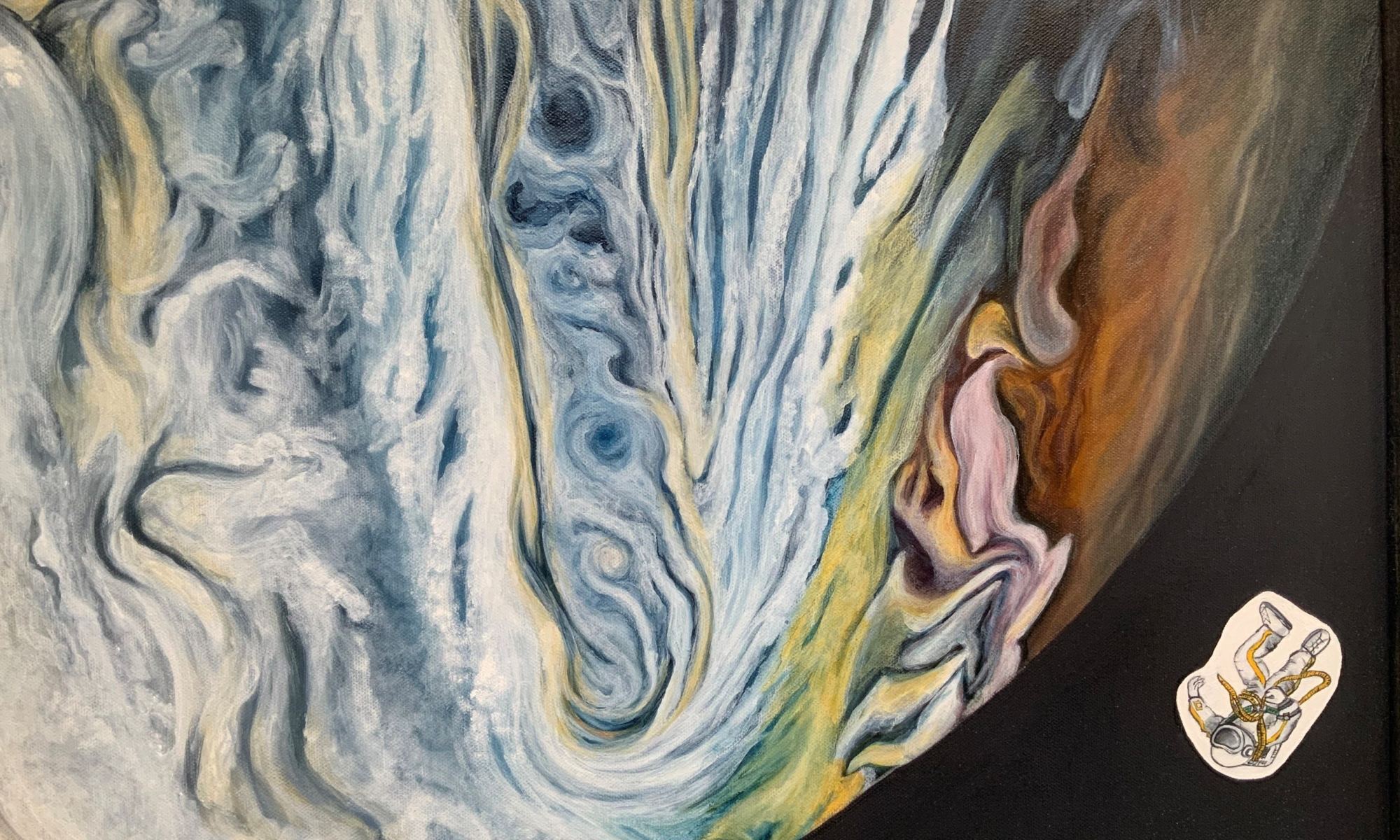All her life, Laci Shea Brock has needed to be creative and inventive. So, perhaps it’s not completely surprising that in addition to pursuing her PhD in planetary sciences and astrophysics, she’s also a talented artist.
“My Dad says I’ve always had a paintbrush in my hand,” Brock said, “and I’ve always been inspired by space and nature.
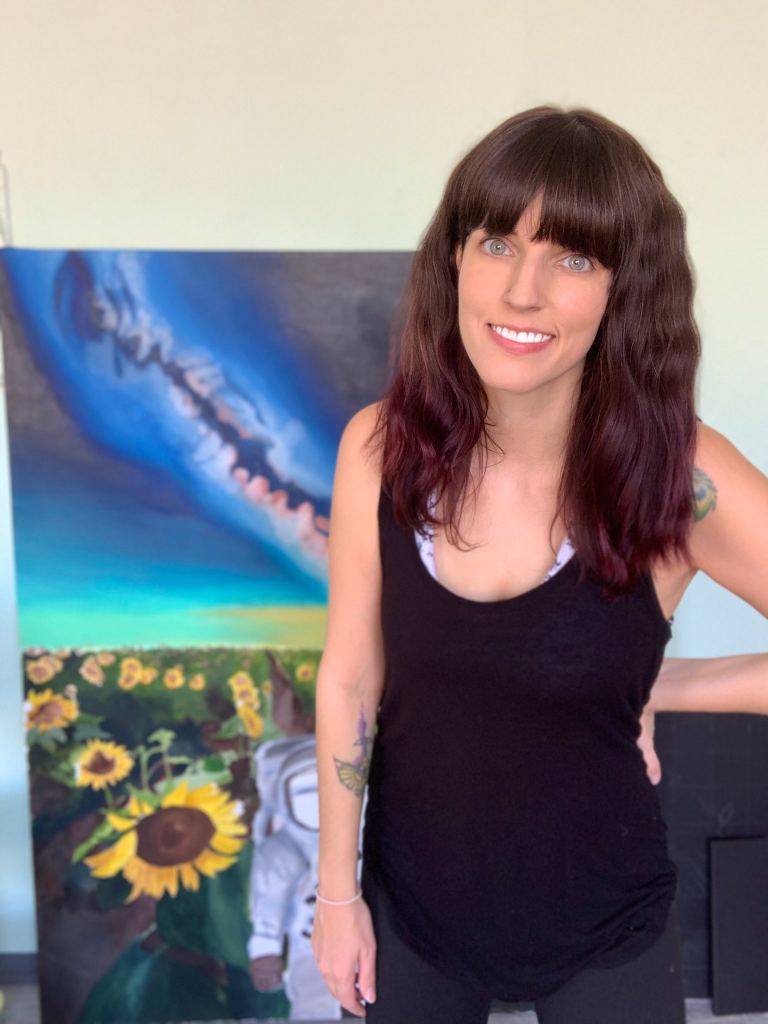
Sharing her art, however, is a relatively new endeavor for Brock. But while working on her first master’s degree in applied physics, she recognized the importance of science communication and outreach, as well as how much she enjoys sharing her love of science.
“One of the beautiful things about science is that it can benefit everyone in society,” she said.
Brock shares her unique artwork on her Instagram page along with insights and videos about the science behind her art, various peeks at works in progress, and tips on some of the skills she’s learned.
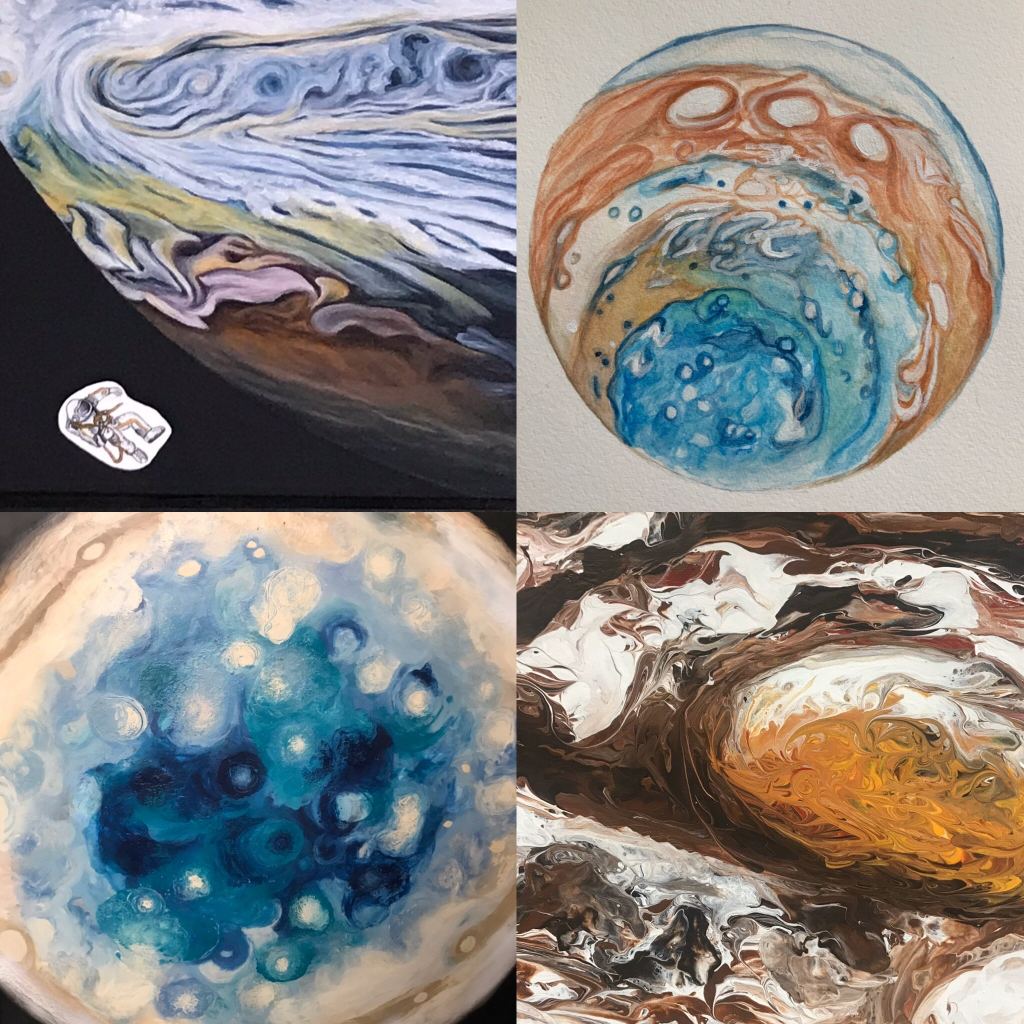
“Originally, I wanted to hide behind my art and not show my face,” she said. “But art and science – with a dash of birds, dinosaurs and landscapes — make up who I am. It seems wrong not to embrace that.”
Her biggest piece of advice? “MESS UP. A LOT,” she wrote on Instagram. “Get a feel for the paint, experiment, develop your own techniques, make mistakes & learn from them.”
Brock has always had an interesting approach to life and art. She grew up in a rural area of Indiana, which inspired her love of nature – and she was especially intrigued by clouds and the wonders of the dark star-filled sky. For a while, she chased storms as a spotter for the National Weather Service, but always came back to her small telescope to observe distant wonders, including seeing Comet Hale-Bopp as a child. Her non-traditional upbringing included watching Bob Ross on TV, and learning to paint on her own by trial and error.
Now, she combines different types of mediums in unconventional ways, such as combining spray paint with acrylic paints or watercolors and ink, all while using a variety of surfaces like wood, poster board, canvases and different types of paper.
“I don’t think I have my own artistic style,” she said. “I like experimenting and I like challenging myself so I’m always trying something different.”
While she loves oil paints and watercolors, her favorite new medium is digital art.
You probably recognize the famous Pillars of Creation from the Hubble Space Telescope. But this is actually a digital painting by Brock, created on an iPad with an Apple Pencil, using an art program called Procreate. If you look closely, you can see subtle differences, but it’s an amazing replica that allows you to admire this piece of art as well as better appreciate the real columns of interstellar gas and dust in the Eagle Nebula.
“I honestly was surprised myself how realistic it turned out to be,” Brock said, “especially because I’ve only be using the digital medium to paint for just a few months. To me, it feels just like having a paintbrush in your hand, and moving the paint around.”
Brock took a circuitous route to astronomy and didn’t start college until she was 21. Initially, she studied atmospheric science but when she learned there was something called “planetary science” where she could study the atmospheres of other worlds, she changed her major to interdisciplinary physics.
She needed to create her own planetary sciences and astrophysics degree to study exactly what she wanted, because it didn’t exist yet at Purdue University. She did research with noted geophysicist Jay Melosh (who recently passed away), who specialized in impact cratering. Melosh inspired Brock to continue studying planetary sciences and astrophysics, and after she received her bachelor’s degree from Purdue University, she went to Northern Arizona University and got a masters in applied physics with a concentration in planetary sciences.
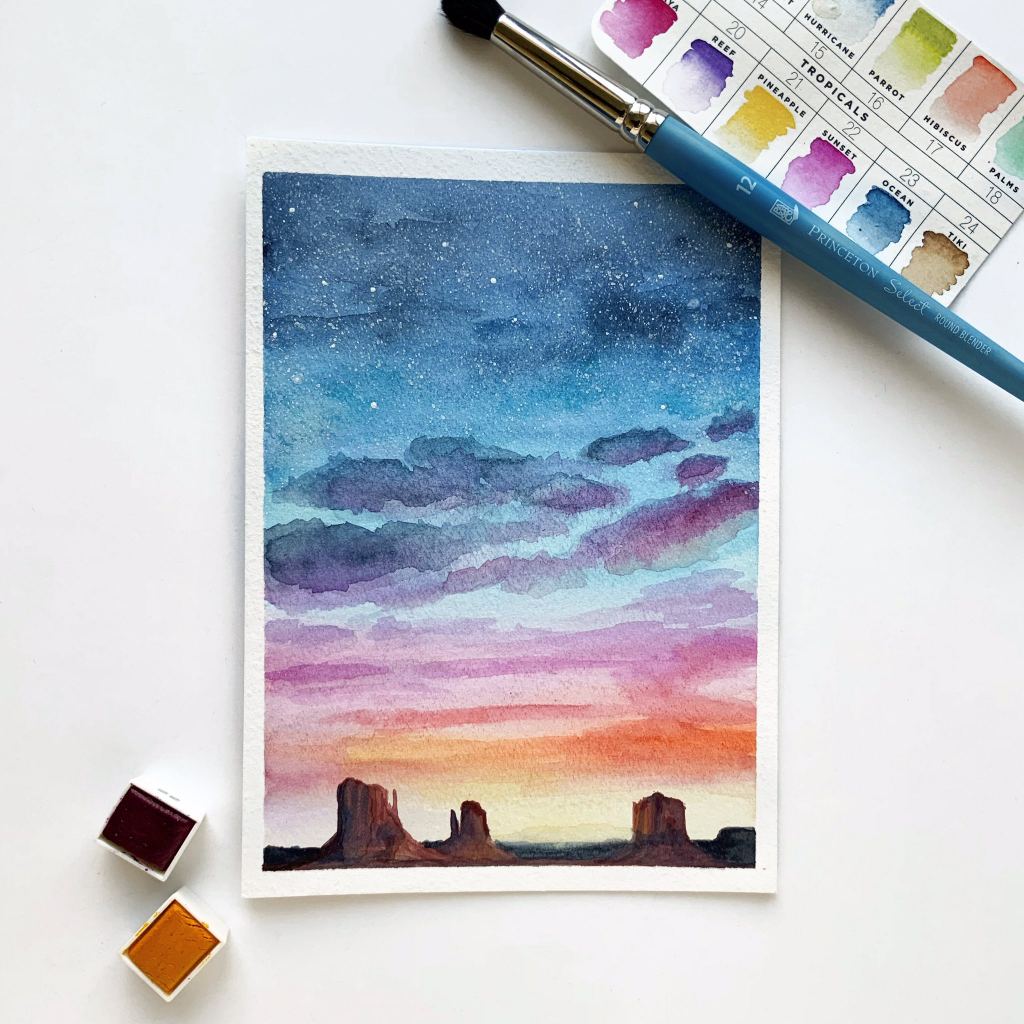
She studied science education and did an interdisciplinary research project that included dinosaurs, geological time and traveling through space, connecting time on Earth with time in the universe
Meanwhile, a car accident in 2014 left Brock unable to walk for 6 months. While continuing her studies from home, she found a new passion of bird watching – and various species of birds now grace her art. She has identified over 300 species helps in conservation efforts to assess the impact of climate change on bird migration.
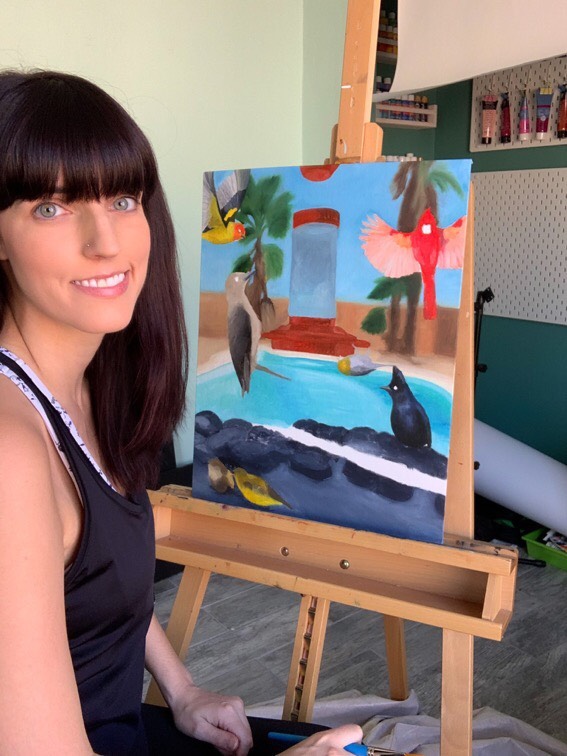
Now, she’s working on an unusual hybrid degree of planetary sciences plus research in science education at the University of Arizona.
“Sometimes your path doesn’t work out how you expect it to or you change your mind along the way,” said Brock. “I’m constantly trying to remind myself that it’s okay. Coming up on the end of my PhD next year, I’ll be facing another decision of what I want to do with my life.”
What does she foresee as her ‘perfect’ job/career in sharing astronomy and planetary science?
“I think I’m going to have to create it,” she said. “I’ve created almost everything else, and since I’ve had an unconventional path, I think I’ll have an unconventional career. But whatever I do, my art will always be a big part of it. I thought I’d have to choose between science and art, but now know that I can do both.”
Lead image: Oil painting of Jupiter by Laci Shea Brock. See it on Instagram here.

